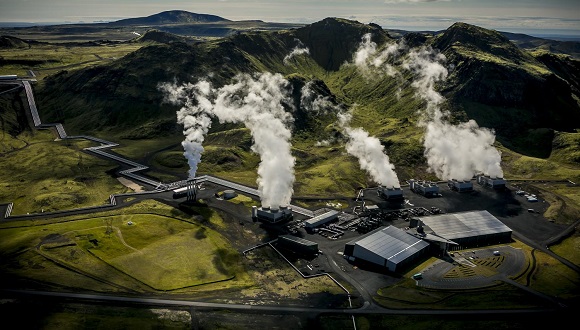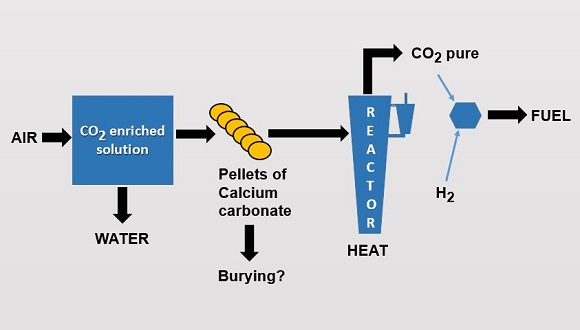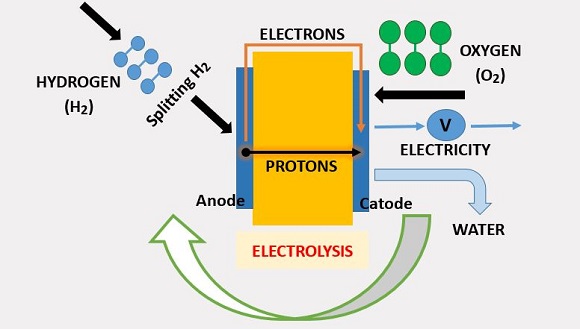A dangerous metabolism: future remedies against CO2 increase?

Geoengineering is a hope to slow down and reduce CO2 levels in the atmosphere. Technological innovations must help us to find solutions to this global problem.

Venus and Mart atmospheres are 95% CO2. In Earth’ atmosphere, life has withdrawn CO2, which now supposes only 0.04%: carbon is the basis of live-beings, which also accumulate it in materials as wood or shells. Along the time, remains of organic matter, with its carbon, have formed huge coal, oil and natural gas reserves and the shells of marine animals have accumulated as carbonated sediments forming rocks and mountains. Although the breathing of plants and animals and the decomposition of organic remains both emit CO2 to the air, the result of the history of life is that CO2 is scarce in our atmosphere.
But the human use of fossil fuels returns carbon to the atmosphere, causing an increase in the greenhouse effect and, then, a temperature rise, as well as an acidification of the oceans. Attempts to reduce emissions have failed to now, despite claims to decrease fuel consumption and to abandon fossil fuels, because the population still grows up, accumulating in cities (which have a high-consuming and high-emitting metabolism), and highly populated countries are still fast increasing their metabolism.
Geoengineering approaches suggest two types of actions on CO2: a) capturing it before its exit to the atmosphere and b) capture it from the atmosphere. Both are feasible. In 2000, BP, Chevron, Petrobras and Suncor began to study the CO2 capture and storage in industrial processes of electricity production. In 2005, the IPCC published the report Carbon Dioxide Capture and Storage (CCS) and now IPCC demands gasification and liquefaction plants producing hydrogen fuel, which might permit to capture 9-12% of the annual CO2 release by 2020 and 21-45% by 2050. CCS consists in three steps: capture during the combustion processes, transport of CO2 under pressure with pipelines and injection in deep porous rocks isolated by shallow impermeable layers.

Today, in the US, there are 120 CCS facilities. Unfortunately CCS processes are quite inefficient and burial is potentially dangerous. Since 2007, there are studies on natural CO2 capture in Iceland geothermic areas with basaltic rocks and J. Matter (University of Southampton) is the leader of an experiment where CO2 has been injected in a well, with calcium, magnesium and iron. In two years, 95% of gas became included in solid carbonates. Basaltic rocks are very abundant, especially in the seabed. But today still all these ways remain complex, poorly efficient and very expensive at a global scale.
The other option, capturing CO2 from the atmosphere, is equivalent to the IPCC negative emissions. Carbon Engineering is a company founded by Bill Gates, Murray Edwards and others in Vancouver, aimed to capture CO2 into pellets. This CO2 could be used to make fuel. They plan to build a first plant able to capture one million tones a day, and to sell a fuel by 2018 that would be oil, so no changes in technology or infrastructure would be required. We are not talking of a perpetuum mobile. Thermodynamics says us that burning fuel degrades energy whereas producing fuel requires energy (maybe solar). But CO2 can be taken from the atmosphere and fuel can be sold. The point for the company is to sell at a price for a feasible business.
Omar Yaghi, from UC Berkeley and the Kavli Nanosciences Energy Institute leaders a research on new materials, consisting of porous crystals of a covalent organic substance containing catalysts, that can absorb CO2 and convert it to CO when water is present, without any toxic solvents. The crystals can then be employed in producing fuel plastics and drugs. Klaus Lackner, of the Center for Carbon Negative Emissions from the University of Arizona, has developed a membrane with a synthetic ion-exchange resin that captures CO2 from the air passing through it in a passive way. The ratio of capture is 10- 50%, a much higher efficiency than that of trees. The resin absorbs CO2 in hot, dry environments and liberates it under wet conditions. Once saturated (1 hour), it has to be transferred to a wet place, CO2 extracted and the resin replaced in the capture site. Collected CO2 can be used to feed algae, in greenhouses, to make fuel or injected in oil wells. Lackner idea is that we need to reduce atmospheric CO2. He suggests that carbon and oil companies might be forced to recover from the air the same amount of CO2 they emit. But millions of artificial trees are needed for a global scale effect…

Finally, let me echo two topics from the Time (January 23th) sustainability supplement. In Davos this year a first agreement has been reached to use H2 in order to attain the aims of Paris conference, i.e. cars moved by hydrogen, which emit only water. The California’s program Zero Emission Vehicle that includes building infrastructures to promote the market for H2 moved cars. The German company H2 Mobility will deploy in its country a network of 400 stations by 2023. In Tokyo there is a four years plan to develop the use of H2 as a fuel. The world’s around 3,000 hydrogen vehicles will increase exponentially.
Àlex Sicart, the Barcelona’s 17 years old genius chosen by Forbes magazine as one of the most influential Europeans of his generation and a great defender of sharing economy, says that autonomous cars (that can be fuelled by H2) will reduce the need of anyone to use his own car and so will decrease cities pollution... The second topic is illumination. In Jakarta, Philips Lighting, an independent company, is upgrading 90,000 street luminaries using LED interconnected lighting as a part of a giant network that will improve coverage for smartphones and give situational information to autonomous vehicles. The company expects that in 2020 all its activity will be carbon neutral and using 100% renewable electricity. Worldwide, a 88% of the street luminaries are still no LED and 98% are unconnected. Global lighting energy consumption could be decreased with new technologies in an 80%.
Technology is not THE solution, but surely it is part of the solution. The fascinating geoengineering proposals here mentioned are not immediately available, but perhaps they can contribute to raise some hope for the next generations.
Notícies relacionades

L’IPBES publica dos informes per transformar la manera com ens relacionem amb la natura, conservar-la i sobreviure

L’impacte social de la recerca es consolida a la cultura científica del CREAF



